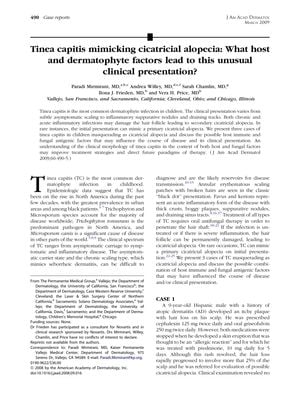Tinea Capitis Mimicking Cicatricial Alopecia: What Host and Dermatophyte Factors Lead to This Unusual Clinical Presentation?
February 2009
in “
Journal of the American Academy of Dermatology
”

TLDR Some cases of tinea capitis, a fungal scalp infection, can look like scarring hair loss due to the body's immune response and the fungus itself.
The document discusses three cases where tinea capitis, a common fungal infection in children, presented in a way that resembled cicatricial alopecia, a type of scarring hair loss. This unusual clinical presentation is thought to be influenced by both host immune responses and fungal antigenic factors. The paper emphasizes the importance of recognizing the varied clinical manifestations of tinea capitis, which can range from mild, asymptomatic scaling to severe, inflammatory nodules. The authors suggest that a better understanding of how host and fungal factors interact could lead to improved treatment strategies for tinea capitis and potentially inform new approaches to therapy.
